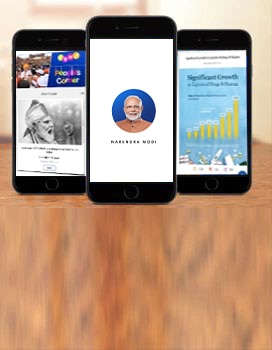Prime Minister Narendra Modi has begun 2025 with a flurry of transformative initiatives, demonstrating his vision for a progressive, self-reliant, and united India. From advancing infrastructure and scientific research to empowering youth and celebrating India’s cultural diversity, his leadership has set the tone for a remarkable year ahead.
The year began with a strong focus on the welfare of farmers during the first Cabinet meeting of 2025 . The government approved the extension of a one-time special package for Di-Ammonium Phosphate (DAP), ensuring affordable fertilizer prices for farmers. This decision highlights the government’s commitment to strengthening India’s agricultural backbone. On the same day, PM Modi met cultural icons such as singer-actor Diljit Dosanjh and chess grandmaster Koneru Humpy, underscoring his focus on promoting arts, sports, and excellence across fields.
On January 3, PM Modi handed over 1,675 newly constructed flats under the In-Situ Slum Rehabilitation Project in Delhi, ensuring better living conditions for thousands of families. He also laid the foundation stones for three transformative educational projects worth over ₹600 crore, including the Eastern Campus at Surajmal Vihar, Western Campus at Dwarka, and the Veer Savarkar College in Najafgarh. These projects aim to enhance educational infrastructure and inspire future generations.
The government’s commitment to rural development took center stage during the Grameen Bharat Mahotsav on January 4, promoting GI-certified village products and boosting rural economies. This initiative aligns with the goal of empowering rural India and integrating it into the global economy. Meanwhile, PM Modi engaged with global tech leaders, including Microsoft CEO Satya Nadella, who announced a $3 billion investment in AI infrastructure in India. These discussions focused on fostering indigenous innovation and creating a self-reliant tech ecosystem.
Infrastructure projects gained momentum with the inauguration of the Namo Bharat Train Corridor on January 5, connecting Sahibabad to Ashok Nagar, and multiple rail infrastructure developments in Odisha, Telangana, and Jammu & Kashmir. These projects symbolize India’s rapid progress in modernizing transport networks under PM Modi’s leadership.
On January 7, PM Modi launched two landmark projects in Andhra Pradesh: the Bulk Drug Park, a ₹1,877 crore initiative to reduce dependency on imported pharmaceutical ingredients, and the Green Hydrogen Hub, aimed at producing 1,500 tonnes of green hydrogen per day. These efforts position India as a leader in renewable energy and pharmaceutical manufacturing.
A significant step forward in science came with the inauguration of the Genome India Project on January 9, which will map the genetic diversity of Indians and advance healthcare solutions for genetic disorders. On the same day, PM Modi addressed the Pravasi Bharatiya Divas Convention in Bhubaneswar, celebrating the achievements of the Indian diaspora and their contributions to the global stage.
On January 12, PM Modi participated in the Viksit Bharat Young Leaders Dialogue, coinciding with National Youth Day and Swami Vivekananda’s Jayanti. This initiative united young innovators and achievers to exchange ideas and envision a developed India, reaffirming the government’s commitment to empowering youth.
On January 13, PM Modi inaugurated the Sonamarg Tunnel in Jammu & Kashmir, improving connectivity and boosting tourism while enhancing national security. He personally interacted with workers and engineers, expressing gratitude for their efforts. That evening, he celebrated Lohri, Pongal, and Makar Sankranti with diverse communities, emphasizing India’s cultural unity and heritage.
By January 15, PM Modi reached another milestone with the commissioning of advanced naval combatants, including new ships and submarines, reflecting India’s growing maritime capabilities. These additions strengthen India’s position as a dominant force in the Indian Ocean and are a testament to the government’s commitment to Aatmanirbhar Bharat in defense.
In just 15 days, PM Modi’s leadership has delivered a transformative beginning to 2025. From scientific breakthroughs and infrastructure projects to youth empowerment and cultural celebration, his actions reflect a vision of a Viksit Bharat . As PM Modi said, “Together, we are shaping a developed India, where every citizen plays a vital role in building a brighter tomorrow.”





















